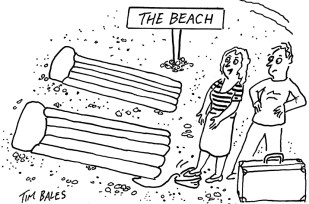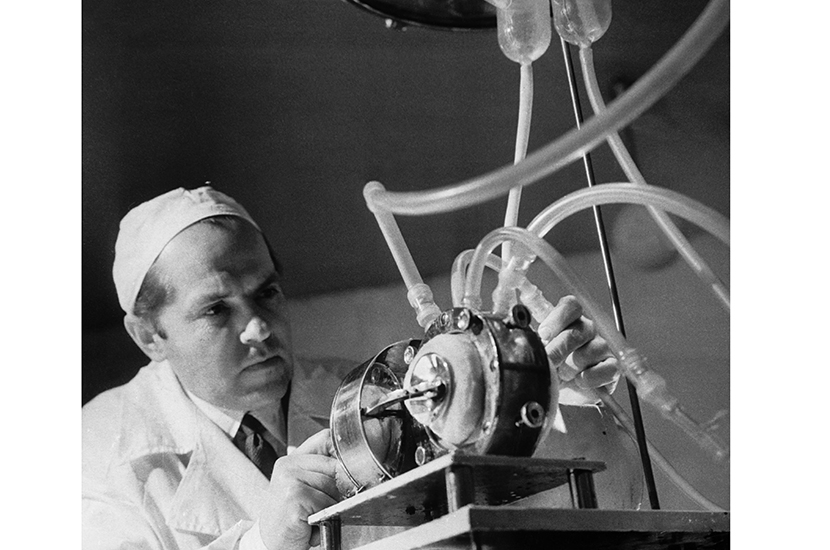I hated reading this book. Not only was it objectively upsetting, as any book describing monkey vivisection would be (I put my head in my hands when I realised there were photographs), it was also dispiriting, because it showed up my hypocrisy. Like so many, I would gratefully accept perfusion brain-cooling techniques if they helped me survive surgery, yet I do not wish to read about how these techniques were developed on primates. It would be enough for me just to know that their suffering was minimised. This book asks even more of its reader, by focusing on gruelling experiments that lead nowhere.
Its cover is a little misleading, with engravings hinting at the period of Burke and Hare, when in fact the book centres on the Cold War, and the animal sacrifice is brutally 20th century. It is well written, in that the author can speak clearly to a layperson and engage a reluctant, even repulsed reader. Brandy Schillace ably and provocatively traces the career of Dr Robert White, a gifted US neurosurgeon who advanced medical science but also spent much of his career on what turned out to be a canard: preparing to effect the first human brain transplant.

Schillace leads us up to the point, in 1999, when it seemed about to happen. White, already turned down by Stephen Hawking, wished to help a paralysed man, Craig Vetovitz (who, as a youth, had dived into a pool head-first from too high — breaking the water with his hands would have saved his vertebrae). Vetovitz had forged a good life for himself, but his kidneys were giving up and White was going to swap his head on to a ‘brain-dead’ donor body. White practised the operation on two human cadavers — then failed to proceed, retired out of his post.
Schillace postulates that in the US White could have found the funds for the operation but not the support, while Russia or Ukraine would have supported it but lacked the funds. Of course there was another, more prosaic reason: Vetovitz’s paralysis would have continued even if the operation had been successful — White had no method for reattaching a spinal cord. But Schillace suggests that if the first head transplant had taken place, such refinements might have followed:
After all, the first heart transplants did not improve the recipients’ lives, and even possibly shortened them. Yet without those first surgeries, the extensive practice of the truly lifesaving heart transplants we have today would never have become a reality.
White was thrown off course, veering towards his fringe preoccupation with full body transplants
Schillace’s writing style is to drip-feed information. For example, instead of describing White upfront as a committed Catholic and father of ten, she drops in regular mentions of his growing family and his visits to the Pope. Her clever use of this technique makes nothing seem predestined. It keeps different outcomes alive. It also helps us suspend judgment on whether White is a crank or a genius, a monster or simply a scientist, and we see him, by turns, as all of these. It’s a biography helped by White’s own confident communication skills — he debated with Peta, invited journalists into his lab and wrote for popular magazines, calling Frankenstein a pioneer. ‘He even appeared at a benefit ball at Halloween, dressed in a Victorian topcoat with Dr Frankenstein emblazoned on his medical bag.’
White also cast himself as a Cold War warrior, racing to beat the USSR in breakthroughs into ‘inner’ space, going to the core of our cerebellum rather than the Moon. He was spurred on by reports and footage of a terrible chimera that is frequently referenced in this book (you have been warned). This was the USSR scientist Vladimir Demikhov’s 1959 spliced-together two–headed dog — revascularised, breathing, one head even lapping milk. It was real; but many other feats of transplant surgery claimed by the USSR were not, as White discovered on his trip there. He was, in a sense, thrown off course by the Russians, veering towards his bombastic, fringe preoccupation with full-body transplants.
The nickname White preferred was the creepy ‘Humble Bob’; ‘the Butcher’ was the name animal rights activists gave him. When he died, he was being considered for a Nobel prize for his work improving brain surgery. Schillace can make one think, but her gung-ho attitude to vivisection — ‘It may seem like a callous waste of monkeys, or at least of research funds’ — is not appealing, and I doubt whether her book will sell in this country.






Comments